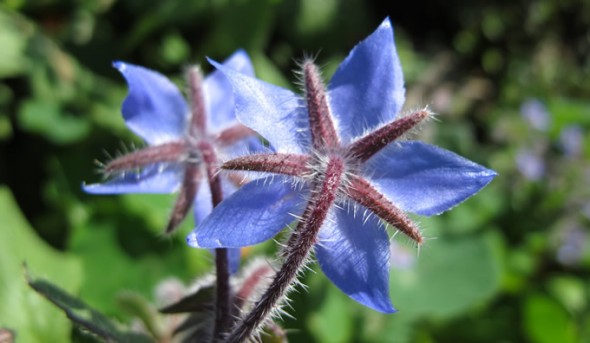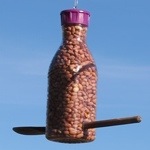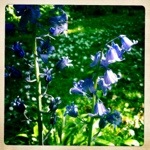Recently we spent a whole weekend clearing the patch of ground on the other side of the garden wall. This patch has always been covered in nettles, goosegrass and ivy which would creep over the wall and invade the garden. It also wasn’t nice to walk down the path at the bottom of the garden and have to avoid being stung by nettles whenever we wanted to appreciate the view and look down to the beach.
So we started pulling all the nettles out and cutting back the ivy and discovered loads of rubble within the soil. We cleared as much as we could and flattened the area. At last we could access our rhubarb and gooseberry without being stung by nettles and getting covered in sticky goosegrass. It was back breaking work and in the end we got rid of 5 trailer loads of weeds, soil and rubble.
It was worth it though as we decided to sew lots of wild flowers and see what would flourish. I had lots of old seeds and no idea whether any of them were viable so I just sprinkled them about and also planted a load of climbing nasturtiums. Within a few weeks lots of things were sprouting and it didn’t take long for the patch of ground to become a haven for bees. Out of the seeds the two plants that succeeded to flourish were poppied and borage. On a morning it’s amazing to go to the bottom of the garden and watch and listen to the bees – so many of them!

They love the borage!

For a plant that can grow so large and tall, it has really tiny flowers, but it is lovely and will hopefully self seed so that next year the bees will be able to come back. The poppies has also been lovely and I’m looking forward to collecting all the dried poppy heads and keeping some of the seeds forr baking – I’ll be able to make poppy seed cake at Christmas with poppy seeds from plants I’ve grown myself at long last!

We’re hoping that the nasturtiums are going to spread down the cliff and self seed to add a bit of colour that we’ll be able to see from the beach below.







